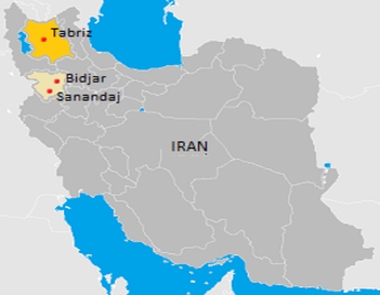History and Origins of Tabriz rugs: the cradle of Persian carpet weaving
Tabriz rugs are an outstanding example of Iranian craftsmanship, known and admired throughout the world. These Persian rugs are renowned for their fine workmanship and rich history dating back hundreds of years. They are named after the city of Tabriz, one of the most important carpet weaving centres in Iran. These carpets are famous not only for their precise handcrafting techniques, but also for their unique designs, often featuring intricate geometric and floral motifs. Tabriz carpets are made with great care and expertise, building on centuries of tradition. The fine materials and dense knotting make them not only beautiful but also extremely durable pieces. Tabriz rugs have a variety of colours and motifs, the most common being the medallion motif and the distinctive Mahi (fish) pattern, which is reminiscent of the classic Persian style. Tabriz has a long history of carpet making and these pieces are an important part of Persian culture and art. Tabriz carpets have gained international recognition not only in Iran but also internationally, thanks to their high quality and artistic value. These rugs are not just utilitarian objects, but true works of art that reflect the richness and history of Persian culture.

The speciality of Tabriz carpets with Mahi pattern
One of the most famous types of Tabriz carpets is the Mahi patterned rug, which is distinguished by its unique style and intricate pattern. The Mahi (which means fish in Persian) motif is meticulously crafted and is one of the most traditional Persian carpet designs. The centre of the design is usually a medallion motif surrounded by finely woven geometric and floral elements, often arranged in a circular pattern on the rug. The fine symmetry and precise lines of Tabriz rugs with the Mahi pattern make them extremely popular with collectors and decorators alike. Not only are these rugs aesthetically stunning, but their timeless quality means they will retain their value for decades. The unique patterns and dense knot count ensure that these rugs are perfect for both traditional and contemporary interiors. Another distinctive feature of Mahi rugs is their subtle colour palette, often consisting of natural earth tones and deep shades such as beige, brown, blue and red. These colours exude harmony and help to highlight the intricate patterns that make each Tabriz rug unique and unrepeatable.
How to recognise an original Tabriz rug?
Recognising an original Tabriz rug is particularly important as there are many copies and reproductions on the market. Authentic Tabriz rugs have several characteristics that help to distinguish them from imitations. Firstly, Tabriz rugs are famous for their high knot count. These rugs often have a density of between 300 000 and 1 000 000 knots per square metre, which is the basis of their fineness and detail. The more knots in a rug, the finer the pattern detail and the more time-consuming the production process. Secondly, the back of Tabriz carpets is also a talking point. On the back of the real pieces, the pattern details are clearly visible and the knots are even. This smooth, well-defined back is difficult to reproduce, and is one of the surest ways of identifying the original piece. Thirdly, the quality of the materials is also key. Authentic Tabriz carpets are often made from natural wool, hand-dyed with natural dyes. The feel of the carpet is also revealing: high quality wool is soft and supple, while weaker imitations are made from stiffer materials.

